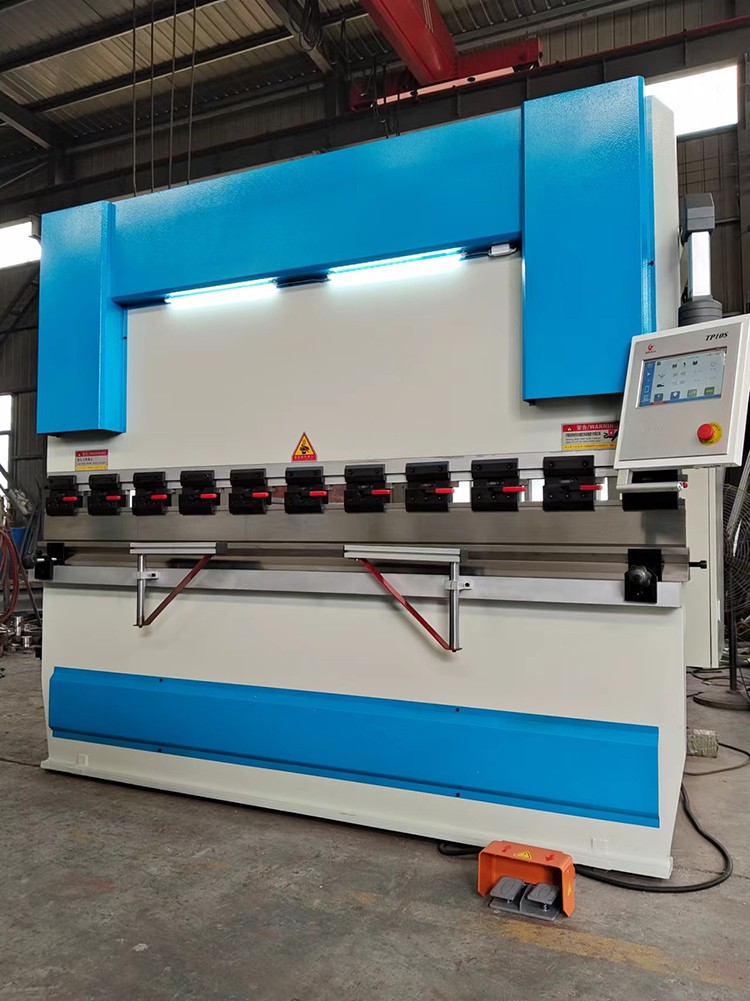

We are a professional bending machine manufacturer with over 10 years of industry experience. Today, we would like to introduce to you the operating points of multi-stage bending to achieve seamlessness:

The bending machine undertakes key molding tasks in sheet metal processing, and the multi-stage bending process can realize continuous processing of complex workpieces and improve productivity and molding accuracy. To realize the seamless connection between the various bending processes, systematic optimization is required from the aspects of equipment commissioning, process planning and operation control.
1, The pre-setting of equipment parameters
The accuracy of multi-stage bending first depends on the initial calibration of the equipment. The parallelism of the slider of the bending machine, the positioning accuracy of the rear stopper and the installation status of the mold directly affects the consistency of the position of each bending section. Before processing, the need to use a percentage meter to detect the parallelism of the slider and the worktable to ensure that the error is within 0.05mm. The repeatability of the positioning accuracy of the rear stop also needs to be calibrated to avoid bending line offset caused by mechanical deviation. In addition, the tightness and perpendicularity of the mold should also be checked to prevent fluctuations in the bending angle due to loosening of the mold.
2, The rational planning of the bending sequence
Multi-stage bending is not a simple sequence of superposition, but according to the structure of the workpiece to optimize the bending steps. Usually follow the principle of “from the outside to the inside” or “from the inside to the outside” to avoid interference with subsequent bending due to the molded part. For example, when machining a box-shaped part with a flap, the perimeter edges should be bent first, and then the internal reinforcement should be formed. If the order is reversed, it may result in the mold not being able to enter the interior of the workpiece properly, or even cause deformation of the sheet. At the same time, the spacing between adjacent bending lines should be reserved enough operating space to ensure that the backstop and upper mold can be accurately positioned.
3, Adaptation and switching of molds
Tooling may need to be changed at different bending stages to suit the angle or shape requirements. In order to achieve rapid switching, standardized die systems can be used, such as the European standard “segmented upper die” and “combined lower die”. Care should be taken during operation:
The opening width (V-groove) of the upper mold should be matched with the thickness of the plate, usually 6~8 times the thickness of the plate;
The shoulder fillet of the lower mold affects the bending radius, which should be selected according to the requirements of the workpiece;
The position of the backstop needs to be recalibrated after the mold change to ensure that the relative dimensions with the previous bending section are accurate.
4, CNC program optimization
Modern bending machines are mostly equipped with CNC systems, which are programmed in a way that directly affects the coherence of multi-stage bending. Key operations include:
Segmented programming: each bending segment as an independent step into the system, and set the coordinates of the transition point, to avoid invalid stops when the slider moves in the empty range;
Speed adjustment: lower speed (e.g. 5~10mm/s) is used in the bending starting section to ensure positioning accuracy, and the speed can be increased to 15~20mm/s in the middle section to improve efficiency;
Pressure control: Dynamically adjust the bending force according to the material thickness to prevent rebound differences due to uneven pressure.
5, Stability control of plate positioning
In multi-stage bending, slight displacement of the plate can accumulate into significant errors. The following measures need to be taken:
Use magnetic clamping device: fix the plate in the bending gap to avoid the deviation caused by manual adjustment;
Rear blocking to assist positioning: For long size workpieces, a lateral blocking mechanism can be added to limit the horizontal movement of the sheet;
Optical alignment system: High-precision models can be equipped with a laser projector to mark the bending line directly on the table to assist in operational calibration.
6, Operator skill requirements
Even if the equipment is highly automated, manual intervention is unavoidable. The operator needs to have:
A global understanding of the bending process and the ability to anticipate the interactions of the various bending segments;
Proficiency in the use of CNC interfaces to quickly correct the coordinates or pressure parameters in the program;
A keen eye for plate deformation to adjust positioning or compensate for rebound in a timely manner.
7, Quality inspection and error correction
After completing multi-stage bending, it is necessary to use angle ruler, calipers and other tools to test section by section. If local angular deviation is found, it can be compensated by fine-tuning the position of the backstop or correcting the pressure value in the CNC program. For highly reflective materials (e.g. stainless steel), the surface should also be checked for scratches caused by multiple bending.
The seamless integration of multi-stage bending is a combination of equipment precision, process planning and operating techniques. By standardizing equipment calibration, optimizing the bending sequence, rational programming and strict quality control, the forming efficiency and consistency of complex workpieces can be significantly improved. With the intelligent development of the bending machine, the future through real-time sensing feedback and adaptive adjustment, will further reduce manual intervention, to achieve a higher level of automated production.
If you are interested in bending machine, please contact us.
 Address:Room 1202, Detaitang Building, No. 118 Huaguang Road, Zhangdian District, Zibo, Shandong
Address:Room 1202, Detaitang Building, No. 118 Huaguang Road, Zhangdian District, Zibo, Shandong WhatsApp:+8615653328535
WhatsApp:+8615653328535 Wechat: +8615965331535
Wechat: +8615965331535  E-mail:zs@sdsmachinery.com
E-mail:zs@sdsmachinery.com